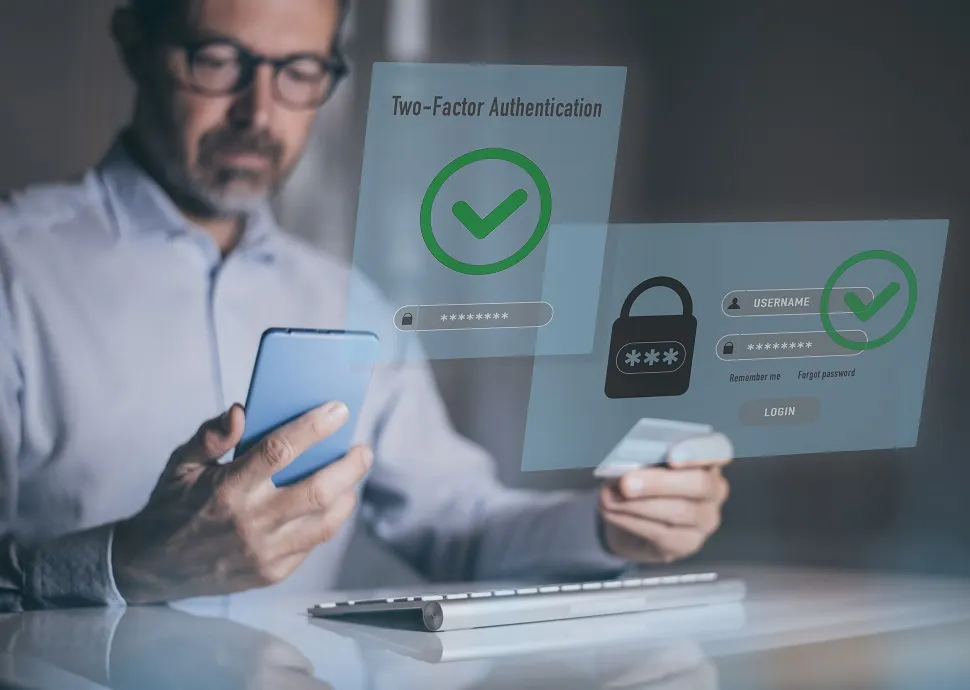Table of Contents
Updated by 10.17.2025
How to Prevent Payment Fraud & Protect Your Business
Payment fraud has reached crisis levels across all types of payment systems. Global card fraud losses hit $33.83 billion in 2023. American consumers lost $27.2 billion to identity theft in 2024, a 19% increase. This shows how quickly bad actors adapt their fraud tactics to commit payment fraud through new channels.
Unfortunately, for many businesses processing digital payments, fraudulent transactions are daily threats that destroy customer trust and drain profits from every payment terminal interaction. This is why effective payment fraud detection is essential for identifying and preventing these attacks in real time.
Types of High-Risk Fraud You Should Know About

Today’s fraud prevention strategies must address specific types of fraud that pose the highest risk to customer satisfaction and business operations.
Account Takeover
Account takeover fraud happens when criminals gain unauthorized access to customers’ online accounts. They use stolen credentials from data breaches to log in, change saved payment details, and intercept fraud alerts. They can work fast, with 40% of fraudulent activity happening within 24 hours of the takeover.
Card Not Present (CNP) Fraud
Online fraud via CNP transactions is the highest risk for e-commerce, as it doesn’t require a physical card. Criminals buy stolen card data from the dark web, then use it to make unauthorized purchases. This card fraud can happen in rapid succession, with criminals testing the payment information using small transactions before making larger, high-value purchases.
Friendly Fraud

Also known as first-party fraud, this occurs when a customer makes a legitimate purchase but then files a chargeback, either unknowingly or to get a free item. Over one-third of consumers unknowingly commit fraud this way, often because they don’t recognize the charge or forget about a recurring subscription.
Business Email Compromise (BEC)
BEC scams target businesses through fraudulent emails that appear to be from an executive or trusted vendor. Criminals use social engineering to trick employees into changing payment instructions or transferring funds to a fraudulent bank account. These fraud attacks are often successful because they exploit trust and bypass technical fraud controls.
Card Testing Fraud
This is a common method that criminals use to validate stolen credit card information before using it for larger purchases. They often use bots or scripts to run multiple transactions in a short period, typically by signing up for free trials or making a zero-amount transaction.
Gift Card and Refund Fraud
Gift card fraud is popular because it’s not as closely monitored as credit card or debit card transactions. Criminals may use stolen payment information to buy gift cards, then request a refund to a different account, effectively laundering funds. Similarly, in refund fraud, bad actors return a different product than what they originally bought.
Don't Let Fraud Catch You Off Guard
Protect your business with a proactive Agent Virtual Terminal (VirtualPay) from E-Complish that stays one step ahead of criminals and their sophisticated tactics.
How to Build Effective Fraud Protection
Building a robust fraud prevention system isn’t always easy. It requires multiple layers of defense that stop criminals while maintaining smooth payment processing for legitimate customers. Here’s what we recommend.
Technology-Driven Detection Systems
Modern payment fraud detection relies on machine learning to analyze thousands of data points per transaction in real-time. These systems examine device fingerprints, geolocation data, and user purchase patterns to spot suspicious activity. Real-time risk scoring helps them flag potential fraud attempts and trigger additional verification for high-risk transactions while allowing low-risk ones to proceed smoothly.
Multi-Layered Authentication

Multi-factor authentication (MFA) combines something a user knows (a password), something they have (a phone), and something they are (biometric data). This layered approach, which can include device authentication and geolocation verification, provides a powerful defense against various types of fraud.
Internal Controls and Employee Training
Implementing segregation of duties ensures that no single employee can initiate, approve, and execute high-value payments, creating a system of checks and balances. Regular audits and reviews of employee access to payment systems help to detect insider threats and maintain accountability for all payment activities.
E-Complish VirtualPay
At E-Complish, we offer VirtualPay that combines real-time monitoring with advanced analytics to detect fraud before it has the chance to impact your business and customer trust. The system includes behavioral analysis, customizable fraud controls, and 24/7 monitoring by expert analysts. VirtualPay ensures your customer payment information meets all security standards, including PCI DSS compliance and SOC 2 certification.
Fraud Strategy Integration

A comprehensive fraud strategy combines technology, processes, and people into one cohesive defense. This includes real-time monitoring of payment activity, automated responses to suspicious transactions, and manual review processes for complex cases. The strategy should also integrate with broader security measures like network security and data encryption to protect against various threats.
Real-Time Data Analysis and Collaboration
Data is a powerful tool in combating fraud. You can use predictive analytics to identify patterns that might signal a future fraud attempt, such as a sudden spike in low-value transactions before a large purchase. Participating in industry-specific fraud forums and consortia helps you share anonymized data on fraud types with other businesses and financial institutions.
Customer Education and Engagement
One simple way to build customer trust is by transparently communicating the security measures you use to protect payment information. Running targeted campaigns to educate customers about common fraud tactics, such as spotting phishing emails or recognizing fake websites, helps them protect themselves. Additionally, providing clear and easy-to-use channels for customers to report suspicious activity not only helps you detect fraud faster, but it also boosts customer engagement and satisfaction.
Emerging Fraud Trends in 2025

Modern fraud tactics continue to expand as criminals adopt new technologies and target emerging payment channels with increasingly sophisticated attacks. Here are some trends to be aware of.
- AI-powered fraud attacks: Criminals are using artificial intelligence to create more convincing fraud attempts. AI-generated phishing emails bypass spam filters, deepfake videos are used for business email compromise (BEC) attacks, and automated bots test stolen information across platforms.
- Resurgence of check fraud: Despite the shift to digital, check fraud is on the rise. Fraudsters now use AI-generated forgeries to create counterfeit checks that can fool traditional verification systems, allowing them to withdraw cash from victim bank accounts.
- Digital wallet vulnerabilities: As more consumers adopt mobile payments, criminals are finding new ways to exploit them. Fraudsters use OTP interception techniques and social engineering to trick users into authorizing fraudulent transactions from their open accounts.
- The Dark Web’s role: The dark web continues to fuel fraud by serving as a marketplace for criminals to buy and sell stolen account information, payment card data, and tools to commit fraud. It’s become an underground economy that supports various fraud types, from simple card fraud to complex identity theft schemes.
Receiving Secure Payments Made Easy with E-Complish
By using cutting-edge technology and formulating an effective risk strategy, companies can protect themselves and their customers from various types of payment fraud.
Unfortunately, with the development of new methods of fraud, businesses must remain vigilant and stay up to date with the latest defense tools to combat the ever-changing threat of fraudulent transactions.
That’s where E-Complish comes in. Contact us to find out how you can protect your business with VirtualPay.
Table of Contents

